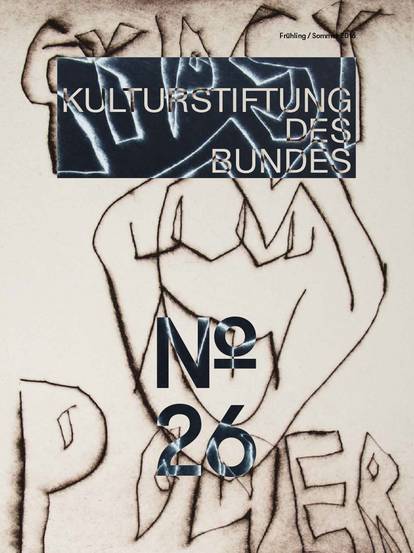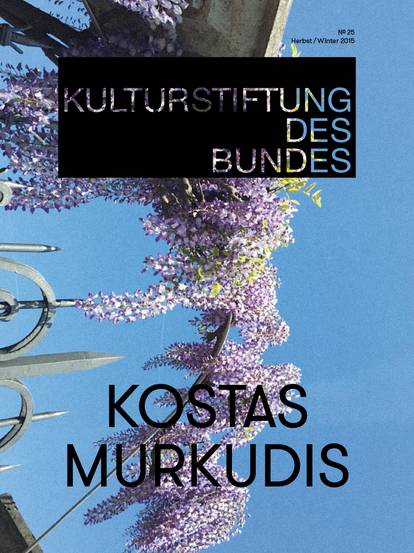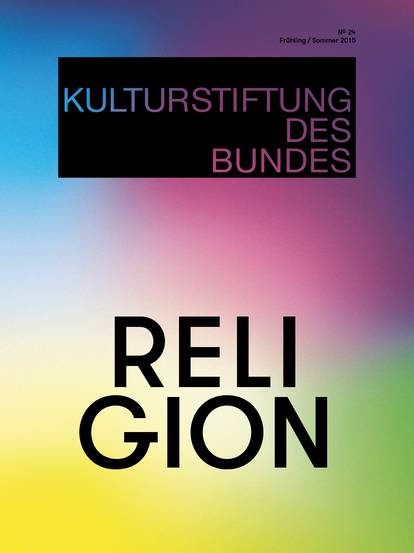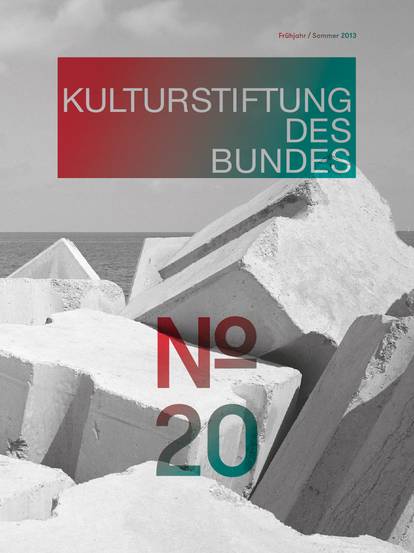“Now everything will be different! The crisis is an opportunity!” Such can-do slogans abounded during the first phase of the coronavirus pandemic. There was good reason for the underlying wish to confront unshakeable normality with the spectre of its demise. The hope was to call into question the constraints and entitlements of the present and to take a moment to fantasize about our future, an exercise that had been discredited by previous crises. But there was a downside to this seemingly favourable moment that revealed the consequence of paralysing excessive demands to overcome an incalculable and economically precarious time. How can we consider making changes if the confrontation with the status quo itself threatens to completely sap our strength?
Issue #35 of our Magazine is entitled “umrisse” (outlines) to describe this attempt at confrontation. Symbolically speaking, outlines refer to the topography of a possible future, an indistinct shape on the horizon, or the initial lines of a sketch propelled by the imagination. Rough lines, indistinct contours, but also large, measured visions – all of these belong to the phase of outlining an idea.
“What is keeping your downtrodden spirit alive in these difficult times? What urgent wishes are helping you escape the dire constraints? What makes you furious, makes you feel helpless looking back on the past weeks and months?” These questions sum up our wish to engage in dialogue with the contributing writers in this issue. We could have also added: “And please no self-congratulatory success stories of how well you’ve managed the crisis – that only makes people feel more discouraged.” But it wasn’t necessary.
The authors presented in this issue address these questions head-on with articles that outline their ongoing thought processes. They explore possible futures and yet deliberately point out where their sketched outlines remain conceptually vague. The articles span a broad range of views, from concrete, political recommendations to scientific analysis of necessary social changes to aesthetic imagination. The boundaries between the genres occasionally blur – and intentionally so – to give one’s thoughts free rein.
The lessons of history often provide insights for envisioning what is to come. “Our social sense of normality in terms of physical integrity, power and equal justice for all adheres to a strong line of development,” says historian and democracy researcher Hedwig Richter in the concluding interview of this issue. She encourages us to regard crises in the context of the great stability of our modern democratic history and to trust in the future development of its fundamental emancipatory principles. A perspective that inspires optimism in the future.
But we begin with Margaret Atwood as she focuses on the past and the work of family remembrance in her diary essay “Life as an eccentric self-isolationist”. She reveals that every attempt to look into the future, every desire to overcome a crisis has its starting point in history. Female caregiving, Atwood recalls, has always simulated normality and offered emotional refuge in moments of historical calamity. But what if she were to break this unwritten rule?
The choreographer Florentina Holzinger and philosopher Eva von Redecker discuss where they find the energy to withstand the loss of normality and describe their ideas for a new collaborative form of action in a protective community: “The Dream of Flying”.
In his piece “Desire for Solidarity?”, Vincent August argues that concepts of community which appear to offer an escape from isolation can quickly assume gestures of authority and exclusivity. His counter suggestion: a culture of conflict with an ongoing, open debate.
In her autobiographical piece “Pressing Times”, Keren Cytter explains why she is reluctant to sacrifice her resistance to grand proclamations of “We” and to fall in line with what she observes as a new, questionable unity of the morally steadfast.
There are some who might have already been humming English phrases from poems by Warsan Shire without even knowing it. The female poet first achieved widespread acclaim as the text writer for Beyoncé’s successful album “Lemonade”. In this first German translation, we present two texts which focus on the physical and emotional damage, the resulting self-rejection and the new political image of the Black female body.
At a time when the digital public sphere has become highly abstract and leaves little room for imagination, the group Laokoon – Cosima Terrasse, Moritz Riesewieck and Hans Block – suggests self-observation as a theatrical intervention. In digital spaces, we find ourselves subjected to constant observation, evaluation and determination by profit-oriented algorithms. Laokoon posits that self-observation would enable us to define ourselves and regain autonomy over our existence: “Resist the Clairvoyant Age!”
The right to own one’s existence and body is a central premise for Hedwig Richter. In an interview entitled “The Bodies of Democracy”she makes a strong case for this interpretation of ownership as the historical basis of a democratic self-awareness which has learned to regard the rights of all people as equal and which must develop further to meet the challenges of a globalised world.
The photos in this issue were taken by Carrie Mae Weems. A major solo exhibition of the artist’s works will be presented by the Württembergischer Kunstverein in Stuttgart in 2021. Weems, a photographer devoted to documenting the shift of Black American identities, is represented here with works in which she captures images of her own body which she has failed to find in public and private space. On the cover she is pictured standing face-to-face with the Pergamon Museum on the Museum Island in Berlin. Does she see herself confronted with a monumental temple of the arts, hermetically sealed in its centuries-old history? Or rather do the contours of the observer and the museum combine in elegant harmony, and proudly surmount the historical chasms which lie between them? Your impression could very well say something about your personal experience in these times of crisis.

![[Translate to English:] Magazine 38](/fileadmin/_processed_/f/1/csm_Magazin38_Cover-Vorschau_921x1230_689f428dc3.jpg)
![[Translate to English:] Magazine 37](/fileadmin/_processed_/b/c/csm_Mag37_Cover-Vorschau_921x1230_b5129fdb2a.jpg)
![[Translate to English:] Magazine 36](/fileadmin/_processed_/2/a/csm_Cover_Magazin36__issuu_2f3cef97bb.jpg)





![[Translate to English:] Magazine 30](/fileadmin/_processed_/c/b/csm_magazin30_vorschau_9005f773d3.jpg)














